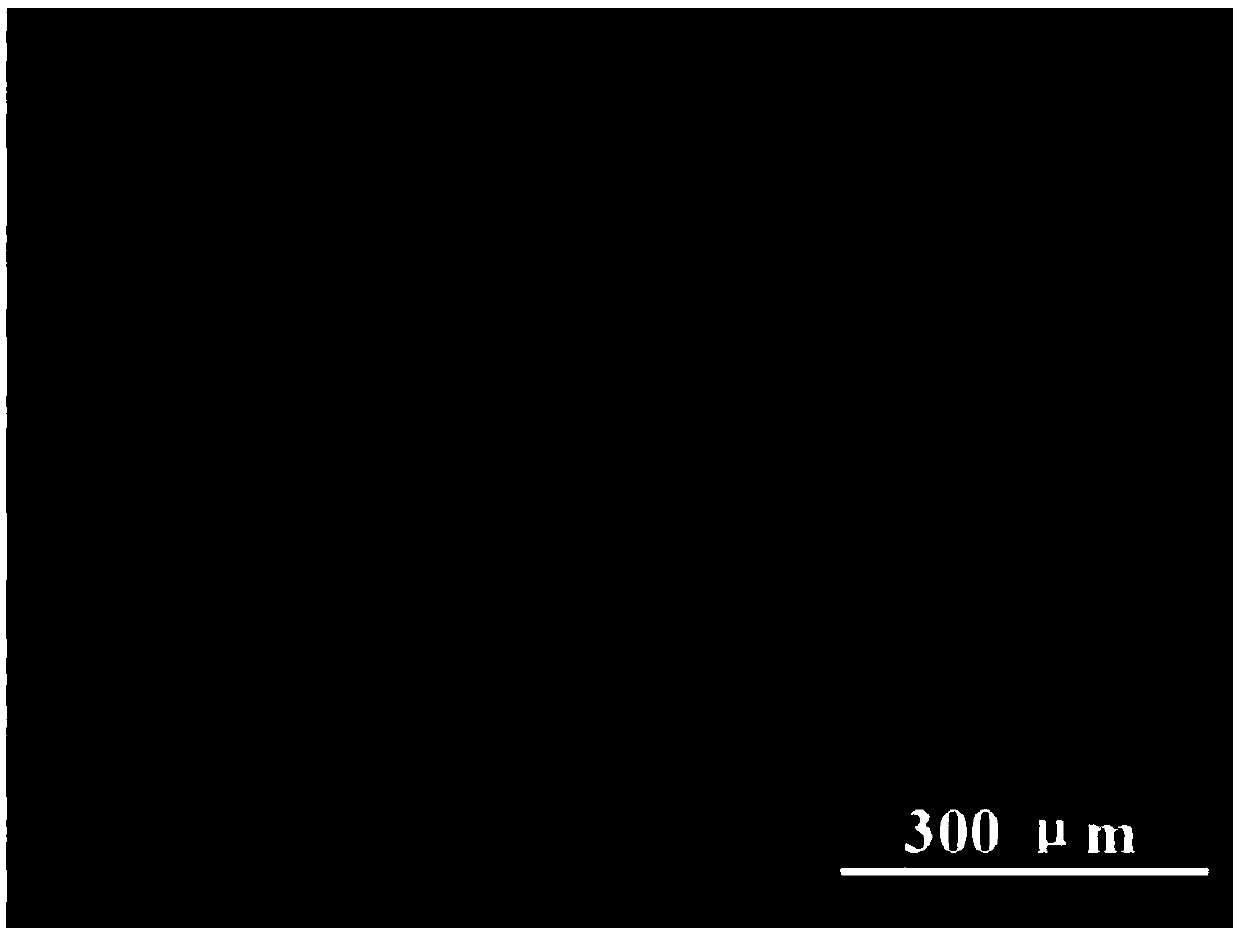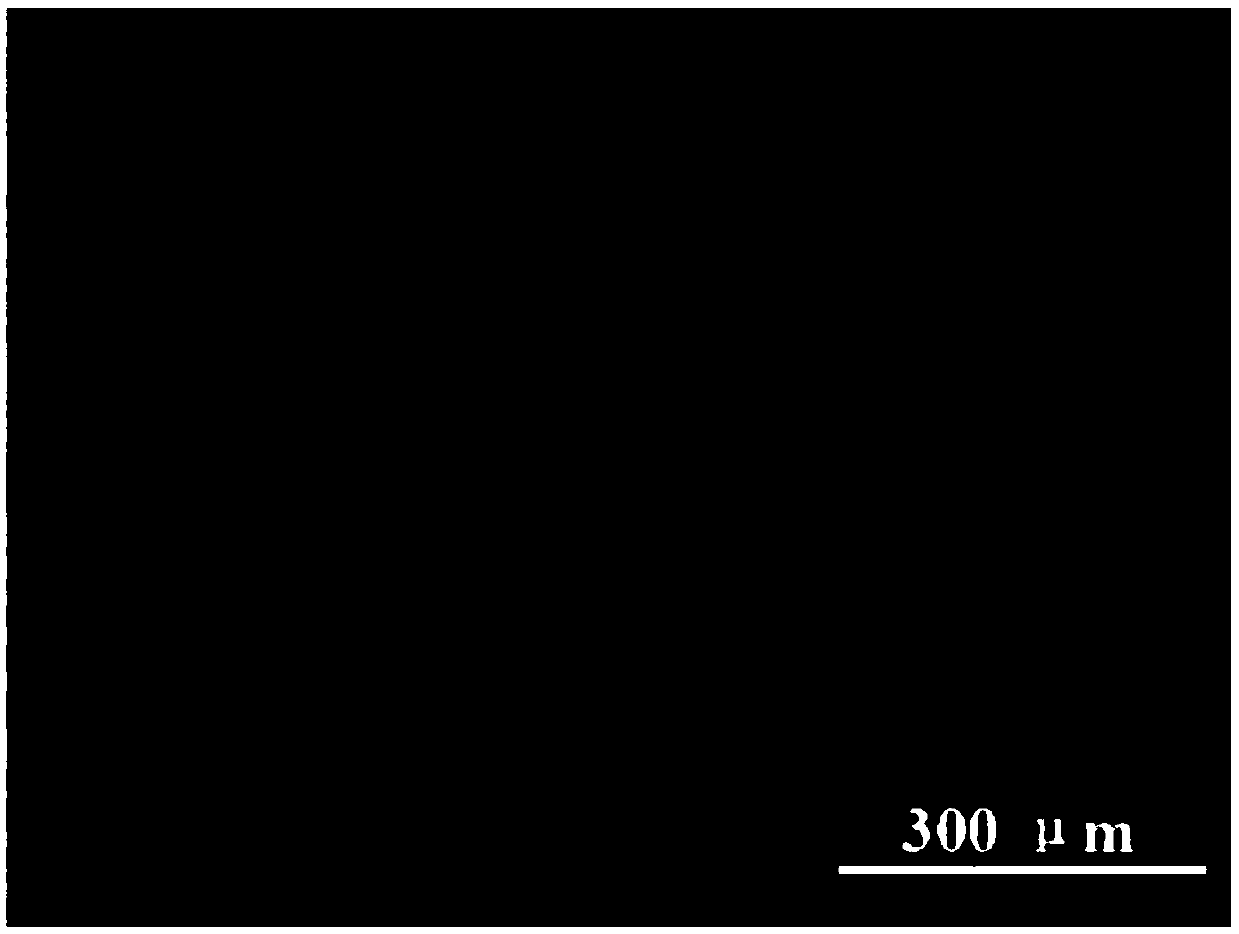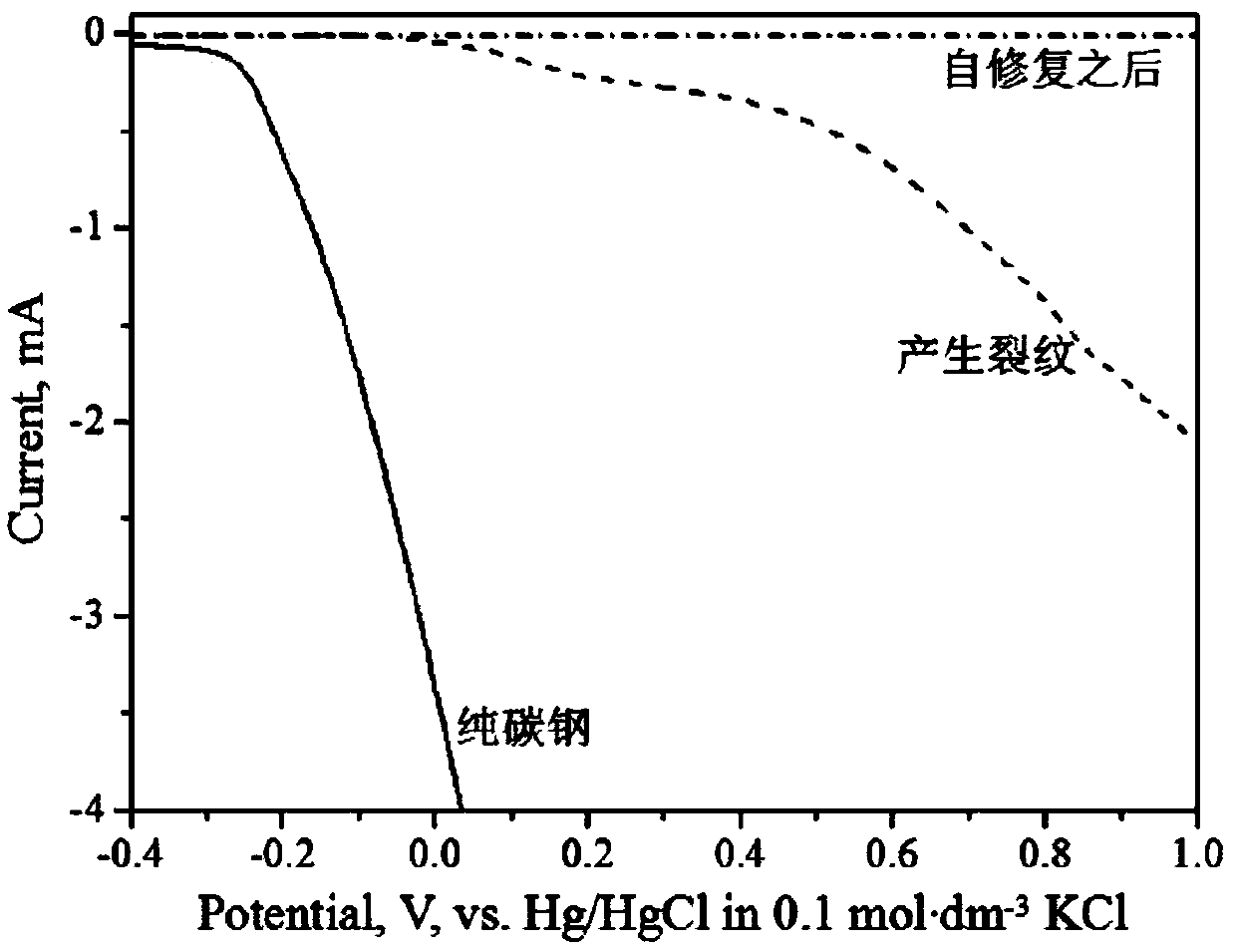Near-infrared light response type self-repair coating and preparation method thereof
A near-infrared light-responsive and self-healing technology, applied in coatings, epoxy resin coatings, etc., can solve the problems of large human body damage, inability to be widely used, expensive and complex nano-gold particles, and achieve rapid repair and good heat generation effect. Effect
- Summary
- Abstract
- Description
- Claims
- Application Information
AI Technical Summary
Problems solved by technology
Method used
Image
Examples
Embodiment 1
[0030] This embodiment discloses a near-infrared light-responsive self-healing coating, which consists of epoxy resin, m-xylylenediamine and 3,5-bis(trifluoromethyl)benzylamine at a molar ratio of 1:0.15:0.7, and 0.2 parts of carbon black composition.
[0031] This embodiment also discloses a method for preparing the near-infrared photoresponsive self-healing coating, including the following steps:
[0032]S1: Mix 0.0032g carbon black with 0.06g m-xylylenediamine and 0.5g 3,5-bis(trifluoromethyl)benzylamine, then add 0.1g organic solvent N,N-dimethylformamide to help disperse, The formed mixed solution is ready to use after ultrasonication for 0.5-1h;
[0033] S2: Heat 1g of epoxy resin at 80-120°C for more than 10min to help it melt;
[0034] S3: mixing and shaking the mixed solution obtained in step S1 with the epoxy resin obtained in step S2;
[0035] S4: Spin coating the epoxy resin mixture obtained in step S3 to prepare a coating, the substrate used is glass, the spin ...
Embodiment 2
[0039] This embodiment discloses a near-infrared light-responsive self-healing coating, which consists of epoxy resin, m-xylylenediamine and 3,5-bis(trifluoromethyl)benzylamine at a molar ratio of 1:0.15:0.7, And 0.1 parts of carbon black composition.
[0040] This embodiment also discloses a method for preparing the near-infrared photoresponsive self-healing coating, including the following steps:
[0041] S1: Mix 0.0016g carbon black with 0.06g m-xylylenediamine and 0.5g 3,5-bis(trifluoromethyl)benzylamine, then add 0.1g organic solvent N,N-dimethylformamide to help disperse, The formed mixed solution is ready to use after ultrasonication for 0.5-1h;
[0042] S2: Heat 1g of epoxy resin at 80-120°C for more than 10min to help it melt;
[0043] S3: mixing and shaking the mixed solution obtained in step S1 with the epoxy resin obtained in step S2;
[0044] S4: Spin coating the epoxy resin mixture obtained in step S3 to prepare a coating, the substrate used is glass, the spin...
Embodiment 3
[0048] This embodiment discloses a near-infrared light-responsive self-healing coating, which consists of epoxy resin, m-xylylenediamine and 3,5-bis(trifluoromethyl)benzylamine at a molar ratio of 1:0.15:0.7, And 1 part of ferric oxide.
[0049] This embodiment also discloses a method for preparing the near-infrared photoresponsive self-healing coating, including the following steps:
[0050] S1: Mix 0.024g of ferric oxide with 0.06g of m-xylylenediamine and 0.5g of 3,5-bis(trifluoromethyl)benzylamine, then add 0.1g of organic solvent N,N-dimethylformamide to help Disperse, and the formed mixed solution is ready for use after ultrasonication for 0.5-1h;
[0051] S2: Heat 1g of epoxy resin at 80-120°C for more than 10min to help it melt;
[0052] S3: mixing and shaking the mixed solution obtained in step S1 with the epoxy resin obtained in step S2;
[0053] S4: Spin coating the epoxy resin mixture obtained in step S3 to prepare a coating, the substrate used is glass, the spi...
PUM
 Login to View More
Login to View More Abstract
Description
Claims
Application Information
 Login to View More
Login to View More - R&D
- Intellectual Property
- Life Sciences
- Materials
- Tech Scout
- Unparalleled Data Quality
- Higher Quality Content
- 60% Fewer Hallucinations
Browse by: Latest US Patents, China's latest patents, Technical Efficacy Thesaurus, Application Domain, Technology Topic, Popular Technical Reports.
© 2025 PatSnap. All rights reserved.Legal|Privacy policy|Modern Slavery Act Transparency Statement|Sitemap|About US| Contact US: help@patsnap.com



